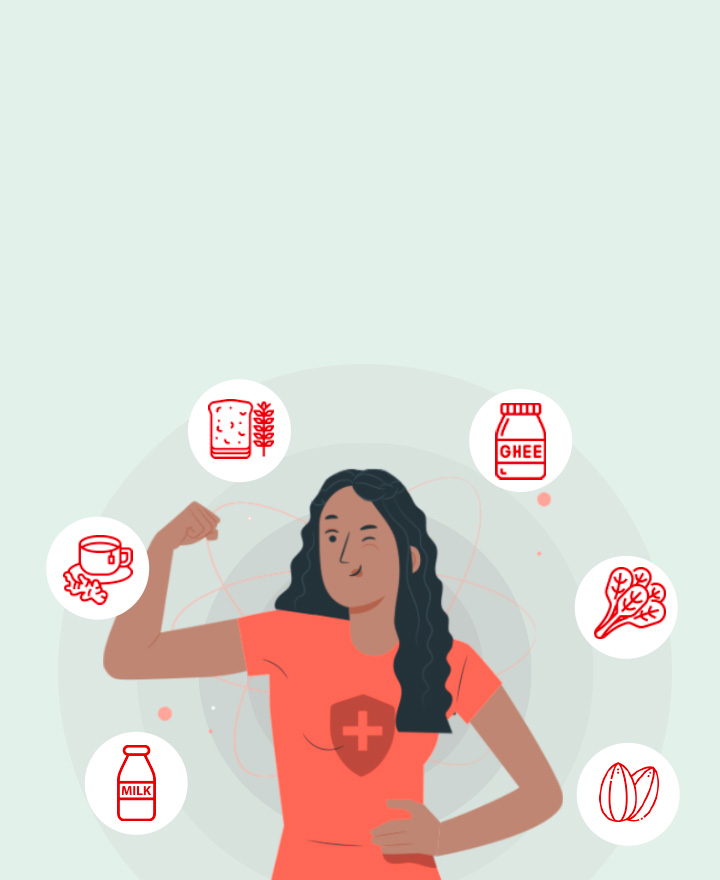

How to Increase Vitamin D Levels Naturally
Vitamin D is essential for healthy bones, proper immune system functioning, and mental well-being. It is often called the "sunshine vitamin," as our bodies produce it when exposed to sunlight. If you're suffering from a vitamin D deficiency, you can boost it up naturally through more exposure to sunlight, choosing foods that are a good source of vitamin D (like fatty fish and fortified products), and taking supplements. UV lamps are also used by those who spend less time under bright sunlight. In this article, we will look closely at easy-to-implement ways to get your daily dose of vitamin D. Read on to know more.
Ways to Boost Your Vitamin D Levels Naturally
There are simple ways on how to increase Vitamin D naturally, such as —
1. Get More Sunlight:
One of the easiest ways to increase your vitamin D levels is by spending more time in the sun. Aim for about 15 to 30 minutes of sunlight exposure on your arms and legs a few times a week. Midday, when the sun is at its highest, is the best time to soak up some rays. Just be mindful not to overdo it to avoid sunburn.
2. Eat Vitamin D-Rich Foods:
While sunlight is a great source, you can also boost your vitamin D levels by adding certain foods to your diet. Here are some examples of foods naturally high in vitamin D —
◦ Fatty fish like salmon, mackerel, and tuna
◦ Egg yolks
◦ Fortified foods like milk, orange juice, and cereals
◦ Mushrooms exposed to sunlight also provide vitamin D
Including these foods in your daily meals is an easy way to address how to increase vitamin D.
3. Consider Supplements:
If you're not able to get enough sunlight or eat vitamin D-rich foods regularly, taking a vitamin D supplement is another option. It's available over the counter in most pharmacies. However, before starting a supplement, it’s always a good idea to talk to your doctor to make sure you're taking the right amount for your needs.
4. Using UV Lamps:
If you’re not able to spend much time outdoors or live in a region with fewer hours of sunlight, especially in winter, a UV lamp can be a real game-changer for your vitamin D levels. It’s like a little sunshine machine for your home!
5. Stay Active Outdoors:
Combining physical activity with outdoor time is a win-win. Going for a walk, jogging, or even gardening outdoors not only helps you stay active but also exposes you to the sunlight, giving you a natural vitamin D boost.
Recommended Intake
The recommended vitamin D intake varies based on age, life stage, and individual health needs. The following guidelines are based on recommendations from the Institute of Medicine (IOM) and the U.S. National Institutes of Health (NIH):
General Recommendations:
1. Infants (0-12 months):
◦ 400 IU (10 mcg) per day.
2. Children (1-18 years):
◦ 600 IU (15 mcg) per day.
3. Adults (19-70 years):
◦ 600 IU (15 mcg) per day.
4. Adults (71 years and older):
◦ 800 IU (20 mcg) per day.
5. Pregnant and Breastfeeding Women:
◦ 600 IU (15 mcg) per day.
Fun Pro Tips to Boost Your Vitamin D Level
If you're grappling with vitamin D deficiency, the below tips will help boost your vitamin D levels —
• Chase the gentle sun:
Skip the midday scorch and get outside in the cool morning or late afternoon.
• Sneaky fortification:
Add fortified milk to your coffee or smoothie. You’re ideally helping your body to be healthier without minimal effort!
• Multitask outdoors:
Sip your coffee outside or stroll around the block.
• Fat is your friend:
Team up vitamin D foods (like fatty fish) with healthy fats (like avocados) to help your body soak it up better.
• Test it out:
Want to know if your vitamin D game is strong? Get a quick blood test to know whether you are getting an adequate dose of vitamin D.
Conclusion
Boosting your vitamin D levels doesn’t have to feel like a chore. A little more time in the sunshine, making smart food choices, and a few lifestyle tweaks can go a long way in getting your vitamin D level up naturally. The key is to strike a balance — enjoy enough sunshine to make a difference without risking sunburn, and mix up your diet with foods that pack a vitamin D punch. Soak up that sun, tweak your meals, and take charge of your health!
One of the important components of our overall wellness is also being financially secured. Healthcare emergencies can happen any time, but a good health insurance policy can protect you from such uncertain situations. To know more about Wellness and other health related tips, visit the wellness corner.
Source: harvard.edu, mayoclinic.org, nih.gov
Disclaimer: This blog provides general information and discussions about health and related subjects. The information and other content provided in this blog, website or any linked materials are not intended and should not be considered or used as a substitute for medical advice, diagnosis, or treatment. Kindly contact your doctor before starting a new medicine or health regime.
Related Articles
Calcium and Vitamin D Rich Food for Stronger Bones
Types of Vitamins and their Functions
Vitamin B12 Rich Fruits, Foods and Vegetables in India
Top Vitamin C Rich Foods, & Vegetables in India
20 Foods That are high in Vitamin E
Published on January 6, 2025


 Health Insurance
Health Insurance  Travel Insurance
Travel Insurance  Car Insurance
Car Insurance  Cyber Insurance
Cyber Insurance  Critical Illness Insurance
Critical Illness Insurance
 Pet Insurance
Pet Insurance
 Bike/Two Wheeler Insurance
Bike/Two Wheeler Insurance  Home Insurance
Home Insurance  Third Party Vehicle Ins.
Third Party Vehicle Ins.  Tractor Insurance
Tractor Insurance  Goods Carrying Vehicle Ins.
Goods Carrying Vehicle Ins.  Passenger Carrying Vehicle Ins.
Passenger Carrying Vehicle Ins.  Compulsory Personal Accident Insurance
Compulsory Personal Accident Insurance  Travel Insurance
Travel Insurance  Rural
Rural